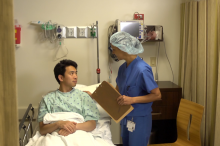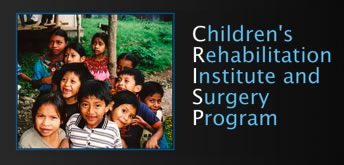
If you have a droopy eyelid, are unhappy with the appearance of your eye, or are suffering from obstructed eyesight – you have some options. At the Orbital Surgery Center of Excellence, our expert eye surgeons provide several cosmetic and reconstructive treatments for ptosis, or droopy eyelids. We specialize in treating issues that affect the orbital area, including the eyes, eyelids, eye sockets, bone, muscles, and surrounding tissues and perform all orbital procedures at our Los Angeles surgery center.
Untreated or severe ptosis can seriously affect eyesight and can result in other issues including dry eyes, irritation, or lazy eye. If you are experiencing drooping eyelids, you should contact one of our qualified, board-certified oculoplastic surgeons at (888) 559-4341.
What Is Ptosis?
Upper eyelid ptosis is the drooping of the upper eyelid, which can result in a reduction in the field of vision when the eyelid obstructs the pupil. The drooping is the result of reduced muscle tone in the eye muscles. Patients suffering from upper eyelid ptosis can have trouble keeping their eyes open and compensate by arching their eyebrows or straining their eye muscles to see. In severe cases, children suffering from ptosis can develop lazy eye or abnormalities of the head and neck due to constant leaning back to see.
Upper eyelid ptosis can do any of the following:
- Effect one or both eyelids
- Be present at birth
- Occur later in life
- Appear asymmetrical
What Causes Droopy Eyelids?
Causes of ptosis can occur over shorter or longer amounts of time. When the tendon that attaches the levator muscle – which lifts the eyelid – starts to stretch, it can cause the eyelid to fall.
Droopy eyelids are also caused by:
- Age related weakness
- Congenital weakness
- Trauma
- Neurologic disease
- As a result of eye surgery
Ptosis Surgery
Your Los Angeles oculoplastic surgeon will determine the cause of the ptosis and plan the best treatment. If treatment is necessary, it is usually surgical. Sometimes a small tuck-in, the lifting muscle, and removal of excess eyelid skin or a blepharoplasty (eyelid lift) can raise the lid sufficiently. Blepharoplasty reduces the appearance of excess skin by removing fat through an incision made in the patients eyelid crease.
More severe ptosis requires reattachment and strengthening of the levator muscle. This restores it to its normal position. It is very important that children with ptosis have annual ophthalmic visits to monitor their vision and prevent severe vision loss.
At the Orbital Surgery Center of Excellence, the goal is to elevate the eyelid to permit a full field of vision and to achieve symmetry with the opposite upper eyelid. Our oculoplastic surgeons perform this surgery on an outpatient basis, which allows our patients to recovery easily with the help of antibiotics and ointment in the weeks following the procedure.
Contact the Orbital Surgery Center of Excellence Today
When a patient is seeking treatment for ptosis, it’s very important to pick a surgeon that has a comprehensive understanding of the eye and the orbit, because it is a very complex and delicate area of the body. The oculoplastic surgeons at that Orbital Surgery Center of Excellence are specialized in both cosmetic and reconstructive oculoplastic surgery as well as treatments for the eye and orbit.
If you’d like to learn more about your ptosis treatment options, please contact us today to schedule your initial meeting with a Los Angeles surgeon. Our physicians are experts in their fields and will address any question or concern that you may have pertaining to your eyelid surgery.














